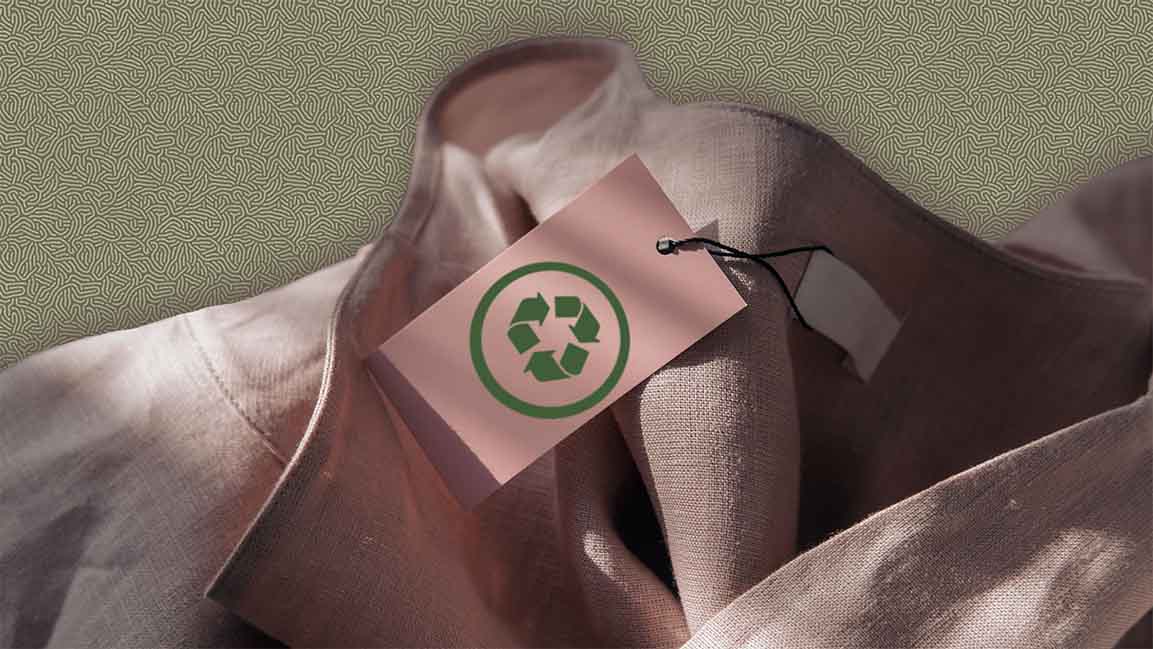- | 9:00 am
The Middle East is one of the biggest luxury markets. What about sustainable luxury?
As sustainability becomes a priority in the region, luxury brands and retailers in the Middle East are increasingly trying to jump on the sustainability bandwagon, but still more needs to be done.

With the world experiencing financial volatility and geopolitical tensions, the Middle East continues to represent a big opportunity for luxury brands where affluent customers have an increasing appetite for luxury goods.
Following strict lockdowns in China and elsewhere worldwide, the region emerged as a haven for wealthy individuals, boosting the sale of luxury goods, particularly in the UAE. Today, the Middle Eastern luxury goods market is estimated at around $15.85 billion. It is expected to double in size by 2030, driven mainly by the UAE and Saudi Arabia, according to Boston Consulting Group (BCG).
“The regional luxury market has shown remarkable growth and resilience despite facing challenges such as inflationary pressures, currency fluctuations, and ongoing disruptions in the supply chain,” says Andrea Fetzer, Head of Strategy at Chalhoub Group. “Luxury consumers are increasingly focusing on acquiring items that are rare, exclusive, and likely to hold their value over time.”
But with the region’s growing commitment to sustainability, especially with Dubai hosting COP28 in November this year, the focus has turned to whether the luxury market can be sustainable.
SETTING UP FOR SUSTAINABILITY
Contrary to fast fashion, luxury products are fundamentally more durable. Using high-quality materials, they are made to last longer than the average product, reducing waste in landfills. According to data by Earth.Org, out of the 100 billion garments produced each year, 92 million tons end up in landfills.
“Indeed, luxury products are known for their high quality and durability,” says Florence Bulte, Chief sustainability officer at Chalhoub Group. “They are built to last, which can reduce the frequency of replacement and, in turn, lessen the environmental impact.”
Yet despite luxury brands being inherently more sustainable, they still need to keep up with the growing trend towards ethical and sustainable luxury. Many luxury brands are implementing sustainability initiatives such as reducing their environmental footprint, limiting waste, and using sustainable materials such as organic cotton, recycled fabrics, and alternative materials like vegan leather. Burberry and Gucci are joining the sustainability movement and using low-impact alternatives and sustainable materials.
But one of the most visible ways to be sustainable is by extending the lifespan of a product. With luxury fashion being responsible for over $2 billion in greenhouse emissions every year, which is about 4% of the world’s total output, according to a report by McKinsey, finding ways to resell and reuse products has become paramount. Re-commerce is, therefore, quickly emerging as the future of sustainability, with many brands and retailers working with resale platforms.
One such platform is Reluxable. Partnering with luxury brands and resale companies, Reluxable provides second-hand luxury products to customers worldwide. Marie-Helen Stavelot, Founder of Reluxable, says this is simply the smarter way to shop as it reduces the need to produce new products.
“We sell what already exists; we don’t produce anything,” she says. “All the stock is already somewhere, and we just connect the buyer with trusted second-hand retailers.”
SHIFTING CONSUMER BEHAVIOR
This trend of buying used products goes hand in hand with today’s increasingly climate-conscious consumers, particularly millennials and Generation Z.
According to a BCG report, millennials and Generation Z are expected to account for 75% of global luxury sales. They are also more inclined to buy second-hand goods, with 35% of them having purchased second-hand luxury goods and 26% having rented luxury goods over the past year, according to the same report.
“I see more and more interest in sustainability in general, but the younger generation is more concerned about the planet and the environment than the older generation,” says Stavelot.
Although sustainability may be top of mind for consumers, Stavelot still struggles with concerns about authenticity from buyers. “People in Dubai are willing to sell their things, which is a good start,” she says. “But they are afraid of second-hand because of the fake market. That’s why I choose to work with trusted resellers; they’re already big and have a verification system.”
It may therefore come as no surprise that while the re-commerce market is growing globally, it is not growing at the same speed in the region. Compared to other parts of the world, re-commerce in the Middle East accounts for about 5% of the luxury market, while in the US and Japan, re-commerce contributes approximately 30%, according to data provided by Chalhoub Group.
SUPPORTING A CIRCULAR ECONOMY
The good news, however, is that sustainability is starting to be woven into the fabric of the fashion industry in the region. This is reflected in the Dubai Design District (d3) launching the Dubai Sustainable Fashion Pact in 2020 to promote sustainable practices in the fashion industry.
Additionally, the UAE launched several initiatives to reduce waste and promote sustainable production through its Zero Waste to Landfill initiative and Circular Economy policy as part of its push towards sustainable economic development.
Those working in the luxury market also try to incorporate sustainable practices. The Luxury Closet (TLC), a re-commerce platform for luxury retail, is mindful of its packaging. Instead of using extra or sustainable packaging, it sells products in original packaging to reduce its carbon footprint.
“We try to maintain original brand packaging as much as possible,” says Kunal Kapoor, CEO of The Luxury Closet. “Giving a second life to packaging and not just products helps us to limit new raw material usage.”
Shipping products to over 80 countries, the startup also aims to reduce its delivery footprint. While it delivers locally in the UAE through sellers and buyers, it aims to have the same setup in Saudi Arabia to reduce its carbon footprint further.
“We have a lot of sellers and buyers in Saudi Arabia,” says Kapoor. “We’re now looking to increase the overlap between Saudi buyers and sellers; that’s our biggest opportunity today.”
Still, promoting widespread sustainable practices can be difficult, with regulatory frameworks varying across countries. Unlike the European Union (EU), which recently adopted recommendations and policies to make clothes tougher, repairable, recyclable, and production more environmentally friendly, the region still has a long way to go to operate more sustainably.
Yet, Kapoor is optimistic about the future, especially as the region increasingly prioritizes sustainability. “Sustainability is becoming very important to customers, and thus to brands, so we’re now making progress in that space,” he says. “As an industry, we are behind, but I believe in the long-term, we will get there.”








































